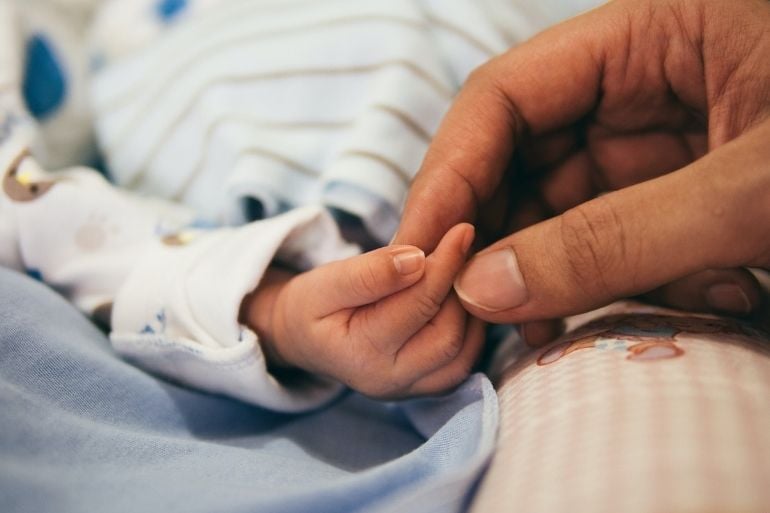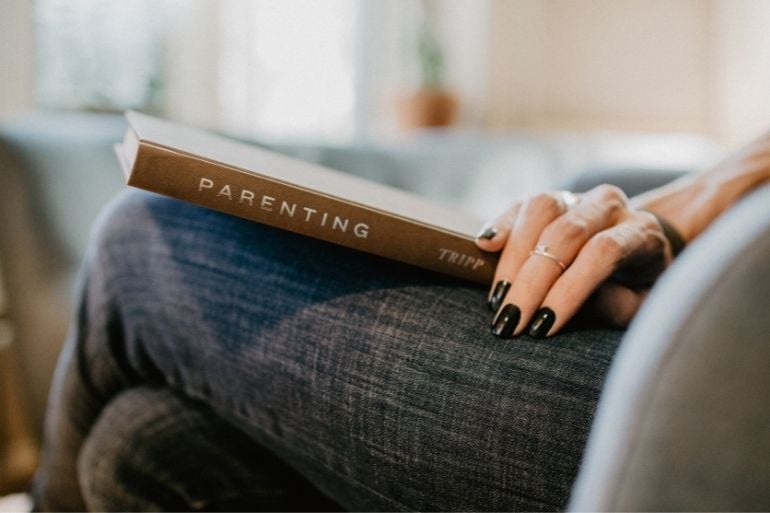March 9, 2021
June 3, 2021
When my friend J. went into labor with her second baby, she wished that her baby would be born after midnight, and with good reason: she went into labor hours before a change in law would give her husband an additional four weeks of paternity leave in Spain.

Since 2017, partners who become parents have experienced increasingly progressive equality in the number of weeks they can take after the birth of a baby. As of 2021, the self-employed and adoptive parents and surrogates are also entitled to benefits.
Knowing what you are entitled to as a new parent can help you navigate the permiso de maternidad or permiso de paternidad and the changes in your postpartum life.
Maternity and Paternity Leave Allowances in Spain
Parents – as well as surrogates and adoptive parents – can enjoy 16 weeks of paid paternity or marternity leave in Spain. To qualify, the parent must be registered in the social security office (dada de alta) and have made contributions for at least 180 days in the last seven years or 360 days throughout their working life. A parent who is employed by a company (cuenta ajena) is entitled to 100% of wages during this period.
The first six weeks immediately following the baby’s birth must be respected by both parents; after this date, each parent can decide how and when to take the time, even nonconsecutively, until the baby is one year old.
In the case of multiples, each child born from the second baby will tack on 15 more days of leave; children born with disabilities are also given an additional 15 days. If a child needs to be in intensive care for more than one week immediately after birth, each parent will get the equivalent number of days, up to 13 weeks.
Those carrying the child can also choose to start maternity leave from the thirty-sixth of gestation; if her job puts her pregnancy at risk, she may be able to go earlier with a doctor’s recommendation.
If a mother wants to take off additional time past the 16 weeks, she has two options: she may take a reducción de jornada until the child is twelve years of age, which will result in a reduction in salary according to the percentage of hours worked, or she may take an exidencia. The later would be unpaid leave for up to three years; the company must keep the worker on during this time, but after one year your employer is not obligated to offer you your previous position. It’s important to note that the mother still earns days towards retirement and is considered to be contributing to social security.
Maternity leave: allocations for nursing and/or bottle feeding
Just because a mother ends her maternity leave doesn’t mean that nursing or bottle-feeding ceases; Spanish employers must make concessions by law to allow one family member to care for a child for up to one hour a day. This comes in one of three forms:
- Allowance to express milk for up to one hour of your workday if you’re full time (30 minutes if you’re part-time) until the baby is nine months old;
- Thirty-minute allowance at the beginning or end of day to arrive late or leave early until the baby is nine months old to bottle feed;
- An extra 15 days off of work immediately following your 16 weeks.
Speak with your supervisor and HR about the reducción de jornada and lactancia and how you plan to use this time; if you choose to express milk during the day, ask where you will be able to do so comfortably and with an outlet, should you need it.
When I returned to work with my first, I chose to take the lactation period out of my day. But pumping at work was stressful for me and I eventually switched to working from home full-time, so I chose to take the 15 days with my second. I communicated this to the HR department as soon as I’d made the choice so that they could start planning accordingly for my reincorporation.

What happens in the case of multiples?
Parents of multiple live births receive an additional two weeks of leave per child from the second baby.
Family leave as a self-employed worked (autónomo/a) in Spain
As of 2021, self-employed parents now enjoy the same rights as those who are employed via a company, so long as they have contributed to social security for the same minimums and their payments are up to date.
Self-employed mothers are exempt from paying their monthly Social Security contributions for the first two years, though they can choose to delay this permission for up to one year after the birth of your child.
How to apply for maternal or parental leave in Spain, and how much of your wages you are entitled to.
The process for applying for family leave is the same – whether or not you are the baby’s biological mother or father, whether you are fostering or adopting. The first step you should take is to register the baby’s birth at the Civil Registry and have this reflected in the family book; this must be done within eight days of the baby’s birth. Following this, make an appointment at the nearest provincial Delegación de la Seguridad Social and bring the following:
- Form MP-101, filled out and signed
- Identification (DNI, NIE or passport)
- Family Book
- Informe de maternidad, or the hospital discharge forms with information about the live birth date and time
- Last three paycheck stubs
- Bank details
- Social Security card (self-employed only)
In the case of an adoption, you must also furnish:
- Sentencing that names you as the caregiver
Each parent or caregiver must make a separate appointment. When my children were born, my employer took care of informing the INSS that I had given birth by facilitating both hospital discharge records, my last three paycheck stubs and a certificate with my employee history. If you are employed by a company, ask your HR department about their procedures.
If you are employed by a company, Social Security pays 100% of your wages during your leave. If you are self-employed, you will be paid 100% of the average daily amount you have earned in the last six months.

What is the cheque bebé?
Working mothers or caregivers in Spain receive a monthly tax rebate of 100€ until the child reaches three years of age. This money can be taken as a monthly payout or applied to a tax declaration; some autonomous communities provided additional financial help for mothers or caregivers.
The takeaway
Though Spain’s family leave is far behind its European counterparts, great strides have been made in the last five years to include other family members and balance the way that families can plan their leave. Don’t forget to add family leave planning into your discussions before the baby is born so that you can maximize baby snuggles and take full advantage of your rights as parents or caregivers.
.png?width=344&height=67&name=logo_caser%20(2).png)






Let Us Know What You Thought about this Post.
Put your Comment Below.